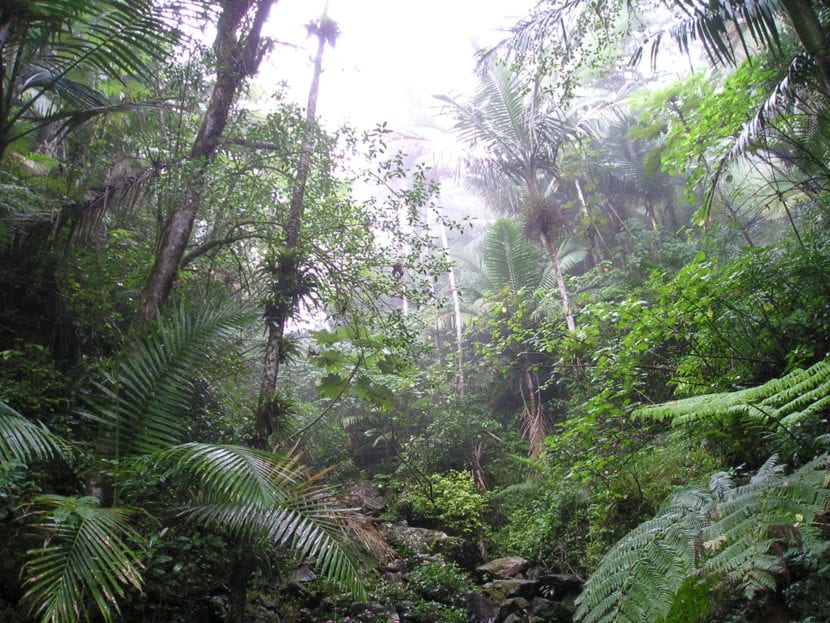
El Equatorial climate It is a type of tropical climate characterized by having an average annual temperature that many of us dream of: above 23ºC. Rainfall is very abundant, and above all, regular, so in the fortunate regions where they have this climate, you can enjoy lush forests and jungles, the kind where you have to move the leaves of the palm trees and ferns if you want to be able to walk.
It is, then, one of the favorite climates, but it is located in very small areas or regions. Let's know more about this interesting and curious climate.
What is and where is the equatorial climate located?
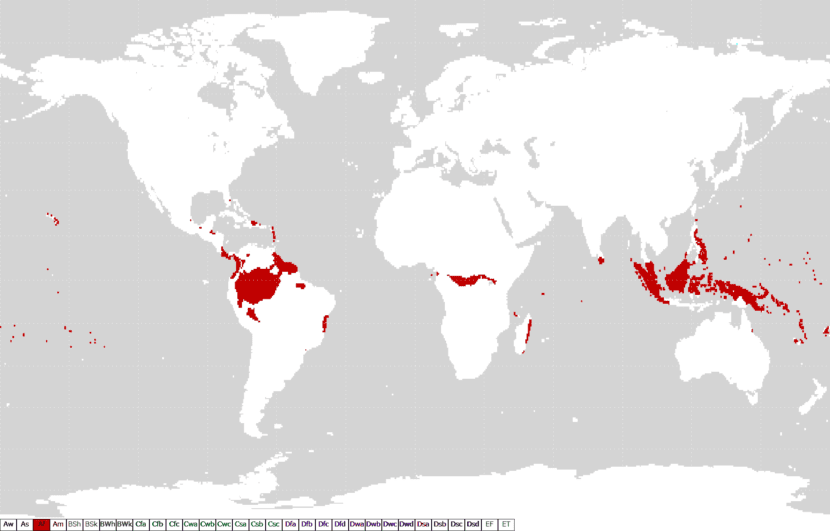
This climate is characterized by having very regular and abundant rains, greater than 1500-2000mm per year, with an annual thermal amplitude lower than 3ºC. There are no seasons, but it always maintains more or less the same temperature and more or less the same liters of water fall each month. It is located between 5ºN and 5ºS, in areas near the Earth's equator, in very low latitudes, where the prevailing wind is the trade winds. Thanks to the constant rains, not only is the landscape evergreen, but also two of the largest rivers and, therefore, the most important in the world, may exist: the Amazon in South America and the Congo in Africa.
If we talk about specific places, you can enjoy this climate if you go to the amazon basin in South America, the Congo basin and the gulf coast from Guinea in Africa, Indonesian archipelago and southern Malay Peninsula in Southeast Asia.
The rivers in these areas are very large, especially thanks to the intense rainfall. But in addition, the evaporation is so intense that immediately the temperatures drop a little, torrential rains fall that carry earth with them to the rivers.
Climograph
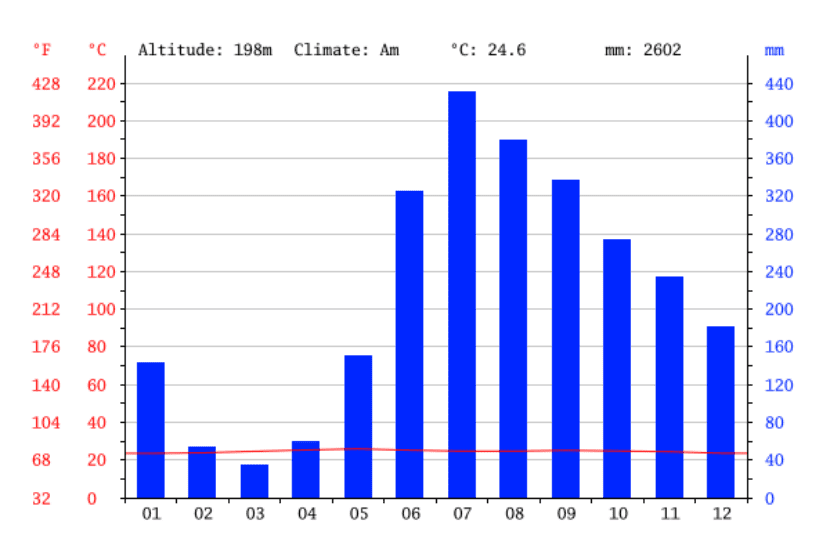
Climograph of Nueva Guinea
To give you an idea of what climate lives in the areas near the equator of the planet, nothing better than consulting a climate chart. The one in the upper image corresponds to that of New Guinea, in Africa and, as you can see, rainfall is especially abundant in July, and somewhat less in March. However, the temperature is always kept above the 24ºC.
Life in the equatorial climate
This type of climate is where the greatest biodiversity in the world is concentrated. Both the flora and the fauna is very varied, but we are going to see it separately:
Flora
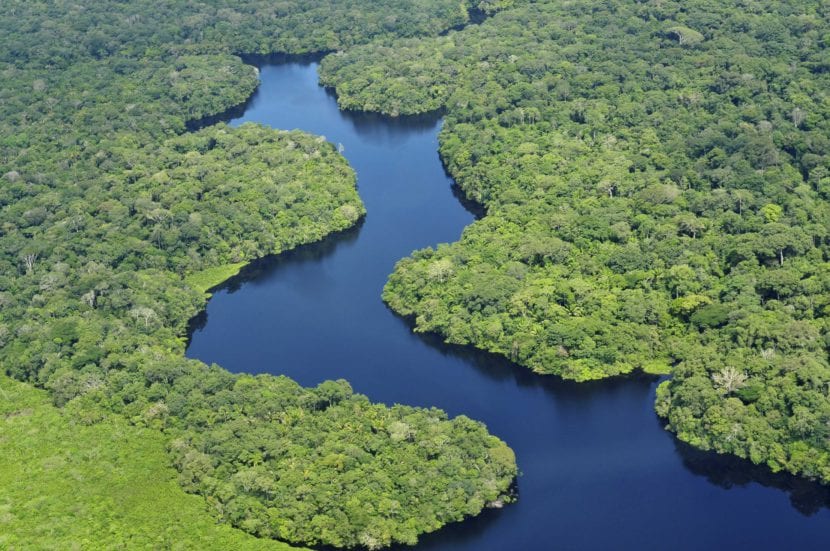
As we said, the jungles and forests are practically impenetrable. There are two types: ombrophilous forest, which is characterized by having a continuous supply of water, and the semiombophilic, that is to say, in which they go through "drier" periods. In the latter it is not that there are seasons, but rather that there are plants that will not be able to withstand this reduction in water and that, therefore, will drop their leaves until the hydric conditions improve.
Still, in both it will be very difficult to find a single dominant speciesSince all of them, since they germinate, do everything possible to capture as much sunlight as they need. And the funny thing is that there are plants in all the "floors", in all of them, even in the branches of the trees where the sun's rays can hardly reach.
Among the most representative plants we find the Orchids, bromeliadsMany palms (Cocos nucifera, Astrocaryum chambira, Oenocarpus mapora, among other), eucalyptus (like rainbow eucalyptus or Eucalyptus deglupta), hevea, bamboo, Ferns, etc. Of course, there are practically no wild herbs, since the competition is so intense that trees, shrubs, palms and vines immediately take over a space to grow.
Fauna
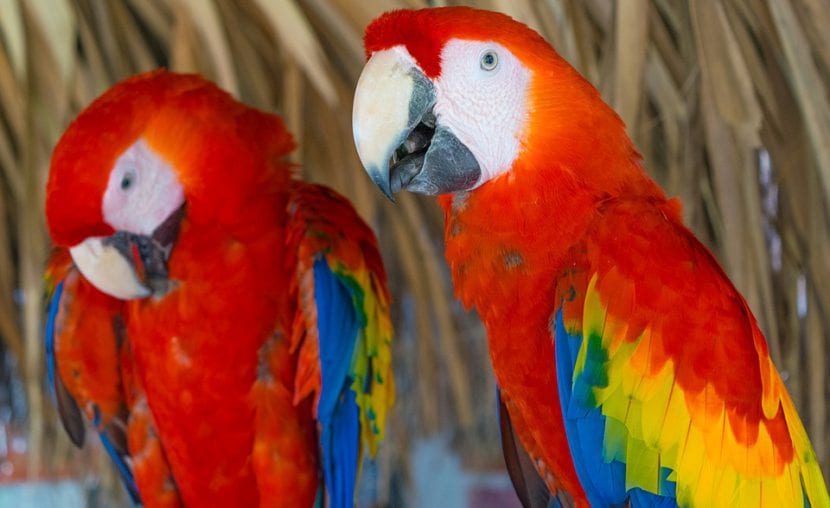
The animals that live here are usually rather small in size, since they can move with more agility while going unnoticed, such as fish y frogs as nice as the one with red eyes, but there are also bigger ones: monkeys, felines (jaguar, cougar), dolphins (like pink), turtles, Alligators, Crocodiles, toucans, macaws,…
People

Of course, human beings live here too. Indigenous peoples live in complete harmony with nature, gathering fruits, and hunting animals to survive. For now, few people live in the jungle, which has allowed them to continue with their traditions and customs without too much trouble.
However, the modern human being increasingly needs more space for him and his family, more farmland, more shopping centers, more ... of everything, which is why he is threatening the few green areas that remain on Earth and, with them , to their indigenous peoples. In fact, in Southeast Asia the forests are retreating as a result of the planting of rice, tea, sugar and hevea.
Now that you know more about the equatorial climate, what do you think? 🙂
I LOVE IT ABOVE ALL THE END PART YOU HAVE ALL THE REASON
IT'S BULLSHIT